
Oct 3 2022
7 min read

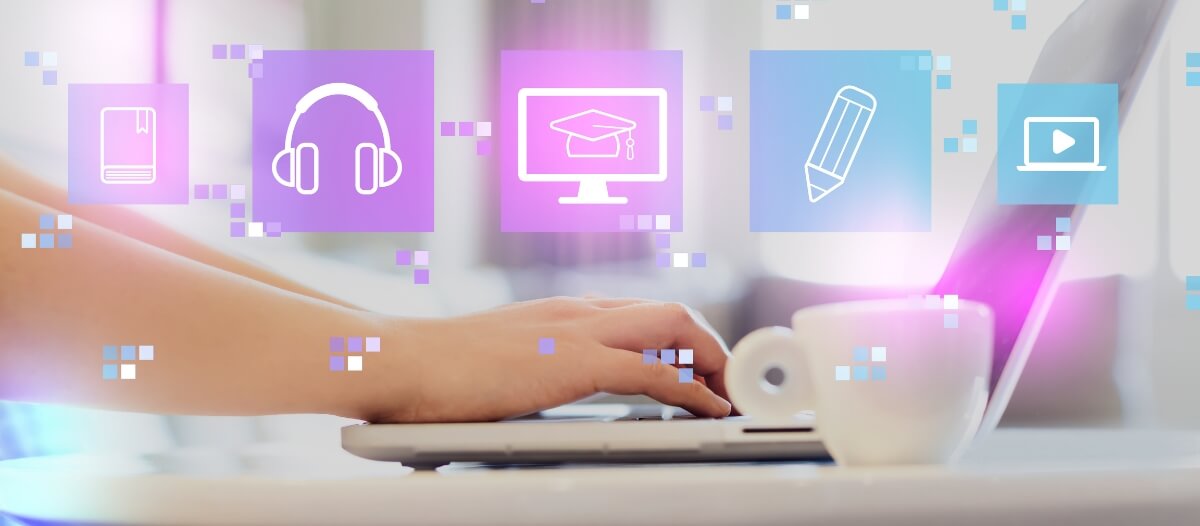
Jun
Imagine if all your history textbooks could be shrunk into a tiny pocket-sized notebook wouldn’t it be fantastic? Well, that dream is still far-fetched, but modern educators are definitely trying to go there. In this new era of e-learning, the focus is on optimization.
Let’s experiment with the topic ‘Fungi.’
Any of a kingdom (Fungi) of saprophytic and parasitic spore-producing eukaryotic typically filamentous organisms formerly classified as plants that lack chlorophyll and include molds, rusts, mildews, smuts, mushrooms, and yeasts.
- Merriam-Webster
Now let’s see the same definition using the microlearning methodology:

Which definition do you think is easier to digest?
You must have already understood what microlearning means by now: “Micro + Learning = Microlearning.”
Definition of Microlearning: Microlearning means learning anything in quick, bite-sized content. Microlearning involves using fewer words to explain a topic and highlighting only the keywords and kernels. It means losing those 'is,' 'has,' 'thus,' and 'thereby' phrases that serve as fillers to make a sentence more readable, not necessarily retainable.
Even though microlearning has silently prevailed since 1963, it only came under the limelight after e-learning rose to popularity due to the smartphone e-learning apps.
It is important to mention here that microlearning, however effective, cannot be considered an alternative to the full range of formal education that we are traditionally given in our schools and colleges. It is more of a supplementary learning model.
In fact, microlearning is more popular in professional training than in academic schooling.
While microlearning modules can be devised in thousands of creative ways, they will mostly fall under any one of these 3 types:
Text-based: The simplest type of microlearning is to present information in short bursts of text with only the keywords. As the above example with fungi.
Audio-visual based: Audio-visual is a powerful tool that impacts our memory functions. You can describe highly complicated topics with this type of microlearning method.
Interaction-based: We love games. And that is why we tend to bring better concentration to any competition we enjoy. Gamifying the e-learning experience through quizzes, creative challenges, and short practical tasks is highly effective.
Indeed microlearning has proved to be beneficial for individual learners. But beyond that, this bite-sized learning model also offers significant advantages that can affect our collective learning culture. The following are some real benefits of microlearning:
1. Higher information retention rates with spacing effect
Studies have proven that the long-term information retention capacities can be strengthened via the ‘Spacing effect.’ The spacing effect shows that when learners are exposed to specific information repeatedly at regular intervals, they tend to remember it for longer.
The following images graphically represent how spacing effect increases our long-term information retention rates (image sourced from Work-learning Research Inc.)
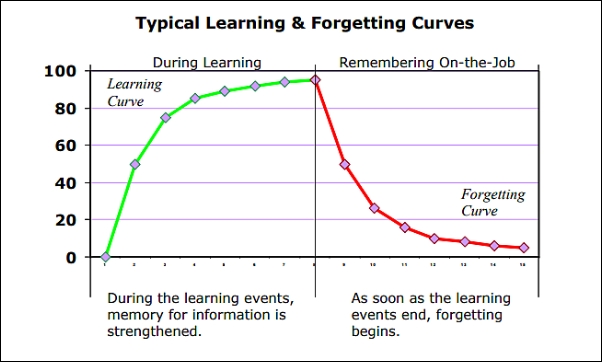
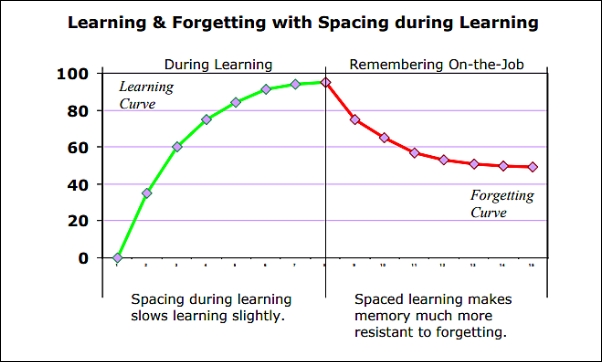
Large volumes of details are difficult to present repeatedly, and even if the spacing effect is present, huge information is impossible for learners to recall fully. That is where microlearning gets an edge.
If you present learners with short bursts of data, they can process it quickly. Further, on subsequent exposures, they tend to retain it better. According to the journal of applied psychology, microlearning shows 17% more efficiency than traditional learning methods.
2. Breaks the accessibility barrier
E-learning has already made education massively accessible; you can sit anywhere in the world and carry on with your training. Microlearning has only further eased the process: you can sit anywhere in the world, quickly turn your digital pages, revisit them anytime, and carry on with your training.
For instance, with books (even e-books), it is tricky to revisit a particular piece of information. You may have forgotten the exact page number where the information was standing. Now imagine the same thing with a short explanatory video.
You may not remember the time in the tape where your discussion of interest occurs. Still, you may recall specific visuals, such as an animation that appeared right before that talk started. More importantly, the videos can be sped up for a faster run-through.
Many video lectures are nowadays divided into small 30-second passages. These passages are usually indexed in the video description. Learners can simply click on each passage and self-pace their training.
3. On-demand and at-the-job education
We are now entirely into the on-demand lifestyle; on-demand streaming of movies on Netflix, on-demand appointments with doctors through telemedicine, on-demand instant delivery of groceries, and whatnot.
The idea of on-demand is to fulfill our wants without going through a lengthy process. In that sense, microlearning has created a culture of education on demand.
Say you are an intern with a consultancy firm. You are working on a client project. Your management has given you a proper 2-week training before handing over the responsibility. But, there is a complex problem that you know has been discussed in your training lectures, but you cannot recall it at the moment.
Traditionally, in situations like this, you would be running around from desk to desk asking your seniors or thumbing through pages of the training materials.
With microlearning, that mess can be avoided. If your organization has an internal training app, you can access the microlearning content in the app, perhaps search with the keyword and instantly get your doubts resolved.
4. Multifaceted use
A microlearning lesson not only helps the individual learners to self-study but can also be used to share knowledge with peers or converge different microlearning lessons to develop an altogether new course. Compare microlearning modules as small post-it notes on a topic. You can organize these post-its easily.
This benefit is frequently cultivated in corporate microlearning strategies. Short training presentations are used for classroom lectures, then forwarded to the trainees for self-study. If the course content does not interfere with the organization’s privacy concerns, it may also be posted on various social media platforms to build engagement and learner community.
While there are rewarding benefits of microlearning, there are also a few limitations.
1. Doesn’t impart in-depth knowledge
Learning a new thing through microlearning alone can be a poor choice of training. As I mentioned earlier, microlearning cannot replace traditional full-length training; it only helps retain the essential parts of a curriculum. Due to the brevity of the content, it can never introduce the learners to the bigger picture.
2. Cannot cater to all learning topics
Microlearning is suitable only if there are key focus points in a topic of discussion. Imagine a perspective dissection of Shakespeare’s Macbeth using microlearning. While it is doable, it will add no significant value to the learner. Similarly, many complex topics are vast and require adequate, if not elaborate discussions. In such cases, microlearning can be a poor medium of knowledge transfer.
3. Risk of a ’lost-in-translation’ situation
Microlearning materials are designed on the principles of keeping the information brief and to the point. In many cases, if the language of the bite-sized content is unclear, it may lead to misinterpretation and derive an utterly negative result.
Microlearning has opened new doors in which educational content is consumed. Its benefits outweigh the current challenges and every industry is mining microlearning to optimize memory efficiency. Here are some industries that are frequently known to include microlearning methodology in their training strategies:
Corporates: Training professionals, encouraging peer-to-peer learning, familiarizing products
Academic institutions: Revisiting classroom learning, promoting interests in subjects beyond the regular curriculum.
Healthcare: Familiarizing with new medical developments
Fitness: Showing fitness tips, personalized infotainment
Public safety: Showing equipment handling, safety hazards, and emergency protocols
Technology is the oxygen for microlearning, at least the modern form of it. There is an app for everything you may want to learn. In fact, e-learning is the third most popular category of apps in the Google PlayStore as of 2022.
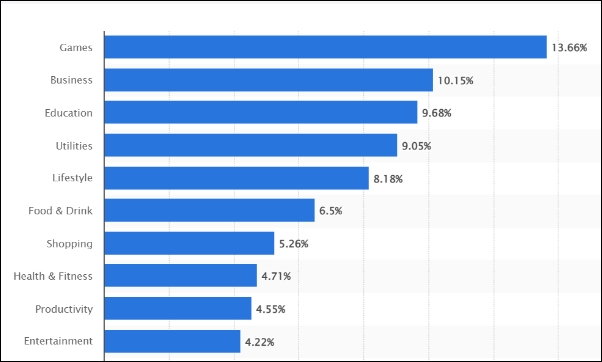
Smartphones have indeed introduced us to microlearning. But, nowadays, corporates and educational institutions are using their on-premise digital displays to show microlearning content— whether it is the schools streaming NASA’s RSS feeds on the classroom digital reader boards or the banks offering customers quick video tutorials on various banking procedures using a digital information kiosk.
If you are looking to deploy a microlearning strategy at your organization, Pickcel’s display content management may help you to design your microlearning content and schedule them on the digital screens at your premise. Contact our team for a free consultation.
While formulating your microlearning lessons, keep these tips in mind:
Deal with the core of the matter: Remember, microlearning lessons have no introduction or conclusion. Save those for the long-form training materials. If you are talking about ‘how to create a video using Adobe Premiere,’ don’t talk about what Adobe Premiere is, how much it costs, or its best features. Start with ‘Step 1.’
Use multimedia format: As I discussed earlier, audio-visual and graphics are more engaging and powerful. If a concept can be better explained using images and videos, try creating your content in that format instead of plain text.
Add interactivity and communication: The best microlearning methods are interactive or conversational. You will often see many language apps use this technique. Once a series of words are translated for you, the app would want you to answer some questions that ask you to pick from multiple choices. Since you just read through the answers, your recall rate will be high, and you will almost answer everything correctly. The app is no fool; they know that. But you are not actually answering questions; you are memorizing the words with the app.
Take complete control of what you show on your digital signage & how you show it.
Start Free Trial Schedule My Demo
Oct 3 2022
7 min read
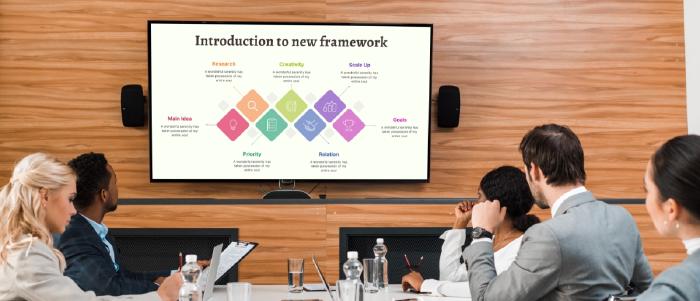
Sep 29 2022
7 min read

May 26 2022
17 min read

Apr 27 2022
24 min read